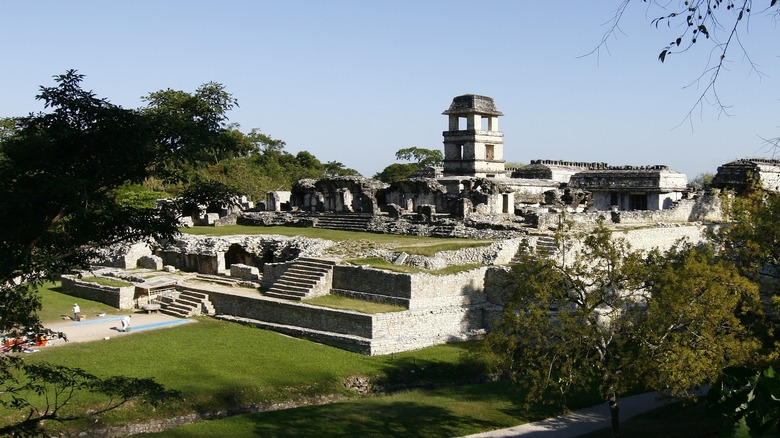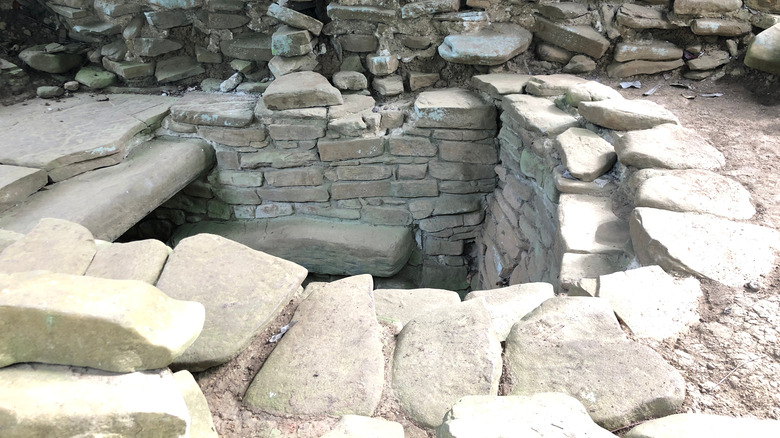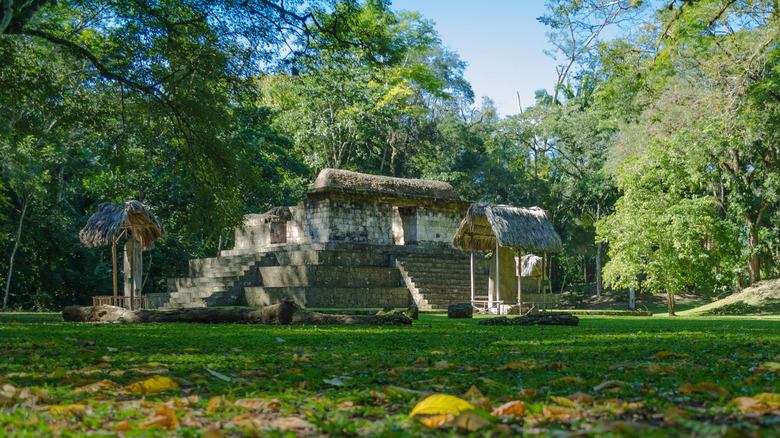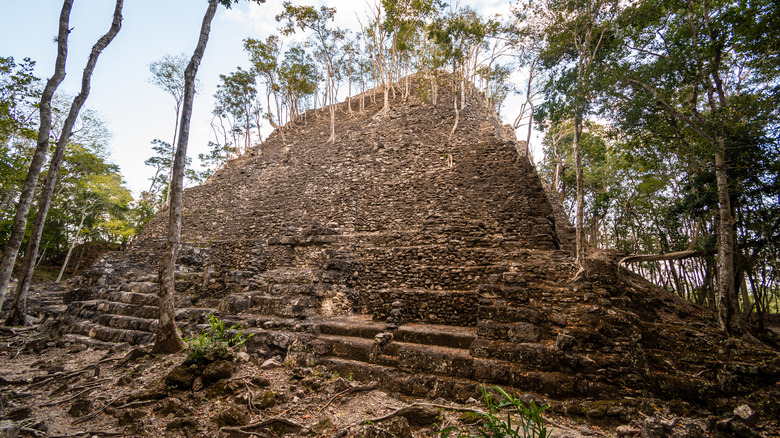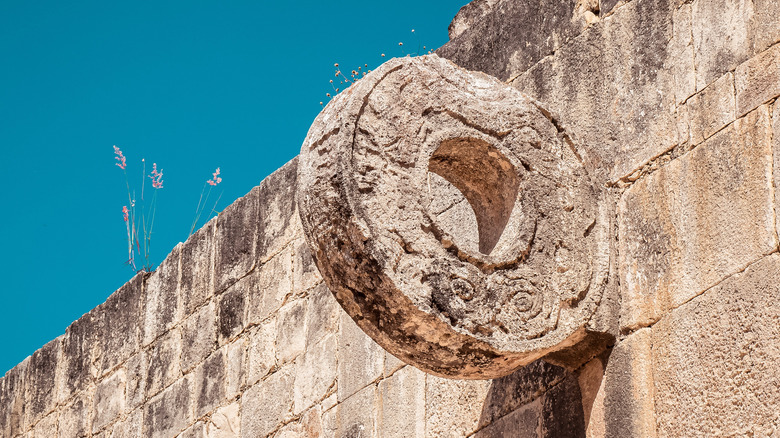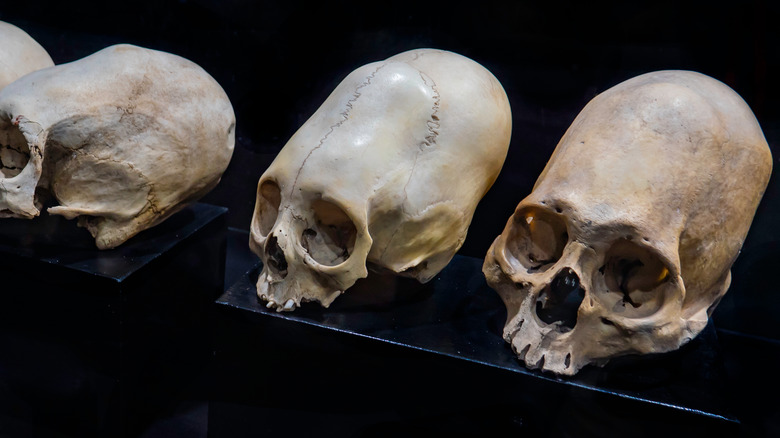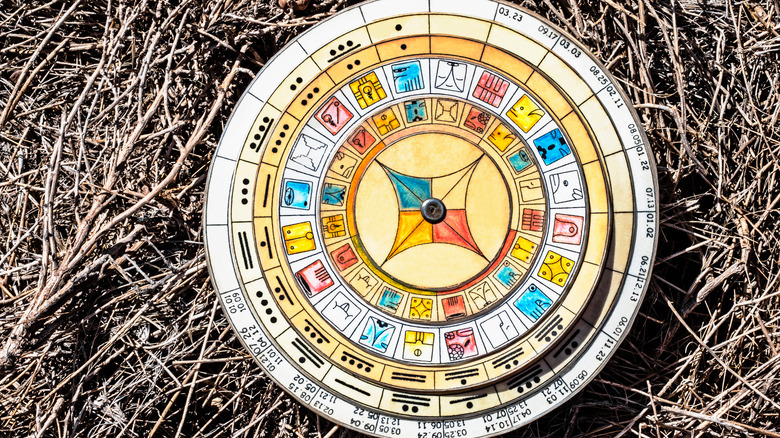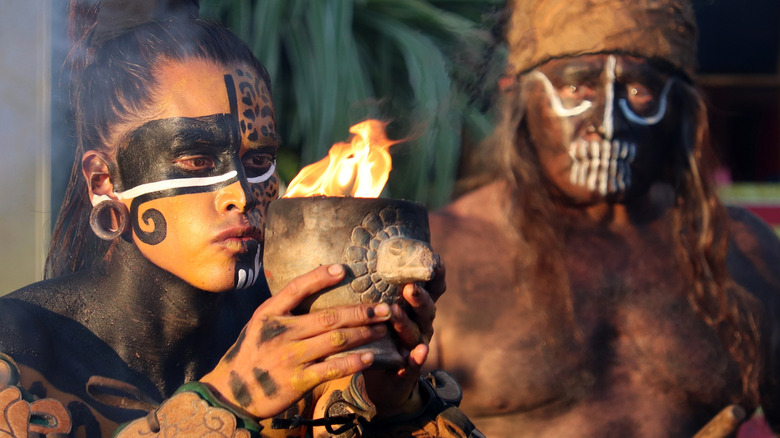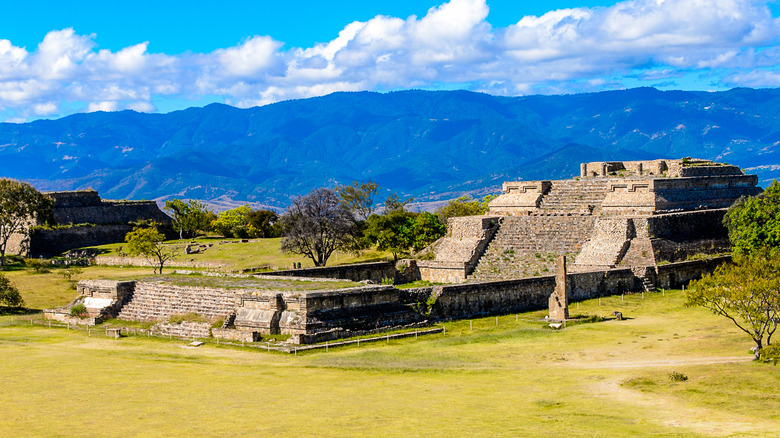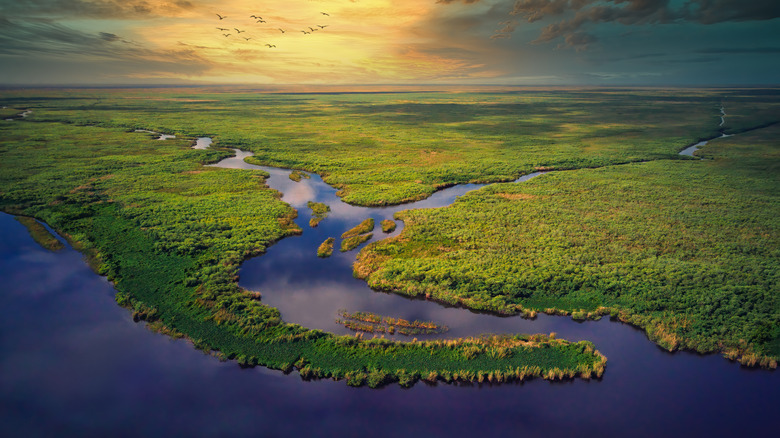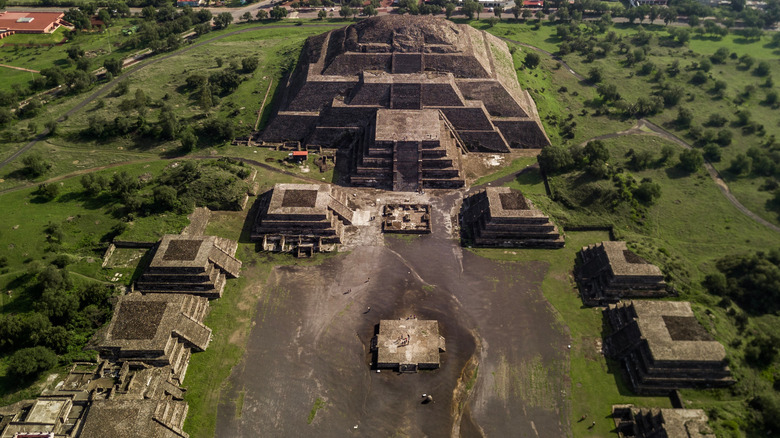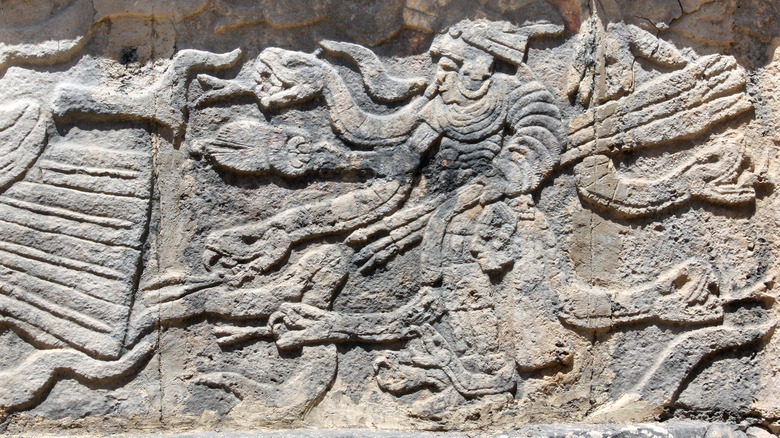Things About The Mayan Empire That Still Can't Be Explained
Scientists are frequently surprised by new evidence about the ancient Mayan civilization. There are so many questions associated with this mysterious society, from its beginning to the collapse of the empire. For a long time, it was assumed the Mayans lived in a decentralized society, dispersed through the tropical jungle. Brutal living conditions could not possibly allow any civilization to flourish, but how did the ancient Mayans become such good astronomers, artists, and engineers?
They couldn't be more wrong — the Mayan civilization was much bigger than anyone anticipated, and their relations were more complex than previously thought. LiDAR technology revealed the vast potential still hidden in the jungles of Guatemala, Belize, Mexico, and Honduras, as the ancient cities uncovered so far represent only a small fracture of what is actually there. This opens numerous questions and shows how little we actually know about the ancient Mayans, and even other civilizations hidden in the jungles of Latin America.
Here are things about the Mayan empire that still can't be explained.
The mysterious pendant found in Belize
In 2015, the researchers found a beautifully carved jade pendant on the ancient site Nim Li Punit in southern Belize. Nim Li Punit was built sometime between 150 and 850 A.D. and translates as "big hat," and the location is far from the bigger ancient cities, like Tikal and Chichen Itza, right on the edge of the Mayan empire. Next to other artifacts, ceremonial pottery, and stone deities, the tomb, dating back to 800 A.D., contained the unique jade pendant, shaped as a T. It is carved, which is not common, but a treasure to the scientists, who were able to read some of its inscriptions. One of the glyphs, shaped like a T, reads as "wind and breath," which connects the pendant to the Mayan god of wind. Nearby carved sculptures also depict a king wearing the pendant, dating to between 721 and 731 A.D.
But why wasn't the pendant of this importance buried with a king, as was the usual manner? While the researchers deciphered some of the inscriptions, others remain a secret, as the Mayan writing system is still not fully understood. Since the glyphs explain the family relations of the king who wore it, UC San Diego archaeologist Geoffrey Braswell believes it was worn by the king who traveled far from the center of the empire, to establish a new dynasty. This rejects the accepted theory that the Mayans weren't politically connected across different cities, and, if true, it could indicate their empire was very different than previously thought (via Science Daily).
Who inspired the cultural shift of 1000 B.C.?
The discovery of the Ceibal settlement left scientists baffled with the question of what happened in 1000 B.C. for Mayans to suddenly jump from a hunter-gatherer lifestyle to permanent settlers.
For years, the scientists were divided in two groups: one claimed the Mayan civilization arose from a specific group, not related to any other civilizations in the area, while others believed the Mayans actually developed from an older culture of Olmecs, found in Mexico. But the discovery of the ancient Maya observatory, found in Ceibal in central Guatemala, proved both groups wrong.
As reported by NBC News, the plaza and the pyramid in Ceibal, which probably served as an observatory, were built around 1000 B.C., which makes them a hefty 200 years older than the La Venta site, previously declared the oldest Mayan settlement. But it is the complexity of the architecture and architectural influences that surprised the archaeologists, as the site wasn't built in a simple manner. As shown by the excavations, the region went through some kind of cultural shift at the time, mixing multiple culture's architecture, ceremonies, and other inventions. This indicates that Mayans were much more developed much earlier in time, rapidly evolving from a hunter-gatherer society to the scientific astronomers we know today. This could be a consequence of successful maize production, but also implies that new civilizations can develop through social interactions, not only on the ashes of the previous one.
How they built pyramids
Similar to several other ancient cultures, the Mayans were masters of engineering, building their temples and pyramids sky high. La Danta, a steep pyramid deep in the El Petén jungle in northern Guatemala, is even larger than the famous Great Pyramid in Egypt, containing around 99 million cubic feet of material. La Danta, still surrounded by almost virgin forest (El Mirador, the city in which La Danta was built, is very easy to miss), is one of the biggest ancient structures in the world, reaching over 230 feet in height. Similar to other Mesopotamian cultures, the Mayans built their pyramids as step pyramids, forming a terraced structure. But it is still unclear how the ancient cultures managed to build such massive buildings, and with such simple tools — from a modern perspective, they didn't even have the technology.
Richard D. Hansen, a scientist and the Director of the Mirador Basin Project, did some calculations. 6,730,769 man-days of labor would be needed to transport the millions of cubic feet of material to the site of El Mirador, which would take 1,000 workers laboring for 18.44 years — all this just to gather and transport the stones. As the Mayans didn't use transport animals such as horses, or the wheel, it is a complete mystery how they actually did it (via Pyramidomania).
What was the point of their ball games?
Per Live Science, a particular ballgame was of huge importance for the ancient indigenous people, as the scientist found it documented from Colombia all over to Arizona. Rules were adapted to local culture, but it was always played in an I-shaped court, paved with limestone. The upper and bottom part of the I was a place to score, while the angled terraces bounced off the ball (a bit like in squash!). The ball was sometimes hit with bodies, in the Mayan's case with their hips, and penalty points were added if one touched a teammate. The site in Chichen Itza even reveals a stone ballgame hoop high on the wall of a ballgame court, but this was more an exception than the rule — it wasn't very likely for a ball to bounce accurately enough to go through the hoop.
Christophe Helmke from the University of Copenhagen states that it is very unlikely that the ballgame itself was closely connected to human sacrifices, as some other researchers claim. It sure did happen from time to time, but not always. Helmke sees the root of this belief in confusion around reading the Popol Vuh, the creation myth of Mayan people, which describes the sacrifices after the game, played between mortal humans and the gods. But it is still unknown what exactly the game meant for the ancient Mayans, who was killed in the sacrifices that did happen, and mostly, why?
Why did they flatten their skulls?
Similar to the ancient Egyptians, the Mayans had a habit of cranial deformation practice, a method of flattening the skull of young children through skull modification to achieve a specific shape. As per a group of scientists who prepared a detailed explanation of Mayan artificial cranial deformation practices, while the technique can be found in various ancient cultures, the ancient people of Central America had a specific attachment to it. They practiced different deformation styles in different time periods, according to the latest trends. But this practice was more than just aesthetic preference – it carried religious and social connotations as well.
There were two main styles, erect deformation, and oblique deformation. The first one was caused by placing a child in cradleboards, to reduce his mobility. The second was achieved by placing the paddles straight to a child's head, producing slightly different effects. When a Spanish missionary asked Mayan people why they do it, they replied that these were the instructions from gods, to make them look better and to carry their burdens more easily. But, as the civilization developed, the oblique deformation was limited to the upper classes of society, while the general population practiced the erect ones. Some theories claim the oblique shape made the elite want to look similar to jaguars, the sacred animals for Mayans, or akin to the god of maize. According to the report, the flattening of the frontal bone is still practiced in some indigenous Mayan communities today (via Journal of Neurosurgery).
When did they start using their calendar?
The Mayan calendar became widely known in 2012, when some claimed the count predicted the world to end in December 2012. The world did not end just yet, but the complexity of Mayan time count opened a discussion on how the Mayans actually view time (still do to this day!), in a much more circular manner than the Roman linear count. There are three wheels on the calendar, each turning under a different speed, making the Mayan calendar one of the most complicated calendars ever discovered. The first wheel, The Long Count calendar, is the slowest – the previous Long count period lasted from August 11, 3114 B.C. to December 21, 2012. The Haab or the civil calendar lasts for 365 days, separated in 20-day units. Tzolk'in, the time of gods, moves much faster – it lasts only 260 days, consisting of 20-day-long months (via World History Encyclopedia).
As per Science, the date August 11, 3114 B.C., is not the date the calendar was written, as the date defines the birth of the universe itself, when the Earth was created. Archaeological findings supported the theory that the calendar was in use since somewhere between 150 and 50 B.C., at least until recently, when new evidence was found. As per an early Maya calendar record from San Bartolo, Guatemala, the recent excavations from San Bartolo show the calendar was in use at least 150 years earlier. The researchers found the inscription "7 Deer," and could draw the conclusion that the calendar was already in use at the time.
How big their civilisation actually was
The thick impenetrable jungle can hide a lot, and for a long time, the scientists believed that the ancient civilizations in Central and South America were much smaller, restricted to specific areas. They saw the ancient cities they found, spread across the jungle, as individual settlements, not a connected society.
The use of LiDAR technology, the new laser system which scans the ground to reveal what is underneath the greenery, caused massive shifts when used to explore the previously dense forests of Latin America. When a group of researchers, including the director of the Middle American Research Institute Marcello Canuto, used the technology to scan EL Petén jungle in 2018, they recorded over 61,000 ancient structures across the Maya Biosphere Reserve. The number is way higher than anyone ever imagined, surprising the seasoned scientists along the way. The newly found ancient Mayan layout rejected previous theories about the simple, decentralized civilization, as the urban plan was obviously constructed for millions of people, explains Steve Snow for LiDAR Magazine.
But it wasn't just the number of structures that struck the researchers, the ancient Mayans built a vast system of roads and highways, connecting thousands of their cities. The scans also revealed a complex water and terrace system, signifying a developed agricultural society. They even built defense walls and fortresses. If scientists previously estimated the Mayan civilization accounted for around 5 million people, now they believe the number could be somewhere between 10 and 15 million (via National Geographic).
How did they use massive, newly discovered platforms?
In 2020, also with the help of LiDAR, a giant platform was found – the earliest and largest known monumental structure constructed by the ancient Maya. The structure Aguada Fenix was discovered in Tabasco region in Mexico and is even bigger than the majestic pyramid El Danta, containing somewhere between 113 million and 150 million cubic feet of material. The structure over 1,300 feet wide and nearly a mile long, reaching 30 to 50 feet high.
But it's not just how big the platform is, but when it was built – constructed sometime between 1000 and 800 B.C., the platform was created during the Preclassical Period, similar to buildings in El Mirador and others. This was the biggest surprise, since it reveals that the Mayans during the Preclassical Period were far more advanced than previously thought, turning the theories about how the ancient Mayans evolved upside down. Some researchers believed the Mayans evolved out of older Olmec civilization, but the age of the platform rejects this theory.
There are at least nine big roads spreading out from the Aguada Fenix Platform into the landscape, indicating the platform could be a center of a bigger complex. But what it was used for is still unknown – it could be used for trade markets, or maybe rituals and processions involving many people, reports ABC News.
Did they colonize Florida?
Some speculate that the Mayans might have traveled further north, crossed the Gulf of Mexico, and settled in Florida. Several archaeological findings indicate that could be possible, as ancient cultures often connected with each other through trade. Ancient settlements near Lake Okeechobee show the remains of widespread trade but also evidence of corn agriculture, which could show the presence of Mayans. The remains of the northern crested caracara, the type of falcon bird important for ancient Central American cultures, were also found in the area, and given the birds don't migrate, it's believed the Mayans brought them over. Lime debris — a rather unique material often used by the Mayans — was also found at the site.
Then there's also the Crystal River site near the Tampa-St. Pete area, a settlement was found which dates back to the time of the Classic Maya civilization. A stepped pyramid was discovered, the same size and made out of the same material as the one in Tabasco in Mexico. Some pottery decorations were also similar to iconography found in Central America, depicting the planet Venus and a "Diving Bird Deity."
Several pyramid structures also existed on the island Key Largo, although they aren't there anymore, leaving only a description from 1985. Other reports, such as one written by the Smithsonian in the 1930s, describe the settlement and temples, and a professor of archaeology at Florida International University, Charles LaCombe, stated the Mayan settlements in Florida were definitely possible. Sadly, most of this ancient archaeology was destroyed in the '70s and '80s, so it is hard to confirm any theories, concludes Robert Bitto, the founder of Mexico Unexplained.
Why did they leave their cities?
When the Classic Period ended sometime between 900 and 1100 A.D., the Mayans abandoned the majority of their cities in the area of today's northern Guatemala, Honduras, southern Mexico, and Belize. That didn't happen gradually, but very abruptly – they moved out so fast, they left unfinished projects behind, like some of the inscriptions on walls and stelas – an integral part of their culture!
The truth is that the Mayans didn't vanish in thin air, they left big urban settlements, but continued their life in smaller groups across the countryside, explains Discover Magazine. Their descendants still exist in Mexico and Guatemala, and often in a very similar manner – scattered through remote parts of the two counties, they keep the Mayan tradition alive.
There are several theories about why the Mayans left their cities, the most popular ones being overpopulation, climate change or political instabilities. As per Charles Golden from Brandeis University, climate change could have caused drought and other effects, which would prevent the Mayans from growing enough food. But that didn't seem to account for everything; there was something else, like the collapse of the government or something completely different, to make people abandon everything. Recent evidence from 2022 reopened the discussion around why the Mayans abandoned their cities, as the theory around destructive drought was challenged by two researchers from the University of California. Scott Fedick and Louis Santiago proved that the Mayans knew over 500 edible plants, among which many were drought resistant, and "the overly simplistic" draught theory wasn't right (via Yahoo News).
Why did the Mayan empire collapse?
When the Mayans abandoned their cities, they abandoned everything, including their sacred texts and other precious objects. Recent discoveries reveal two human skulls found in the Mayan city Pacbitun in Belize. The skulls look like they were battle trophies, similar to those depicted in reliefs and pottery. Other artifacts found in the area further show there must have been some kind of war or conflict, and researchers assume it could have been a battle between new powers in the north and southern older dynasties (via The Conversation).
But David Wahl and Francisco Estrada-Belli disagree, as their findings show that warfare was much more present in the ancient Mayan society as previously thought. The evidence found in the ancient city of Witzna in the El Petén jungle indicate the city was burnt twice, way before the period when the empire collapsed. Another piece of evidence, the symbol "puluuy" describing the burning, was found on other sites as well. The authors concluded that warfare was fairly common, so it likely wasn't a main reason for the collapse (via Live Science).
Some think aliens had something to do with it – they meddled with the Mayan civilization from the beginning, after all, right? Author Erich von Däniken is fully convinced that the Kʼinich Janaabʼ Pakal, the ruler of Palenque city, was transported to space, and that this is documented on the inscriptions and reliefs on his sarcophagus (via Gaia). Maybe others went with him as well? (Archaeologists largely disagree, though.) To make things even weirder, in 2011, the Mexican and Guatemalan governments even claimed they possessed documents which could prove the alien connection – but the documents never became public.
